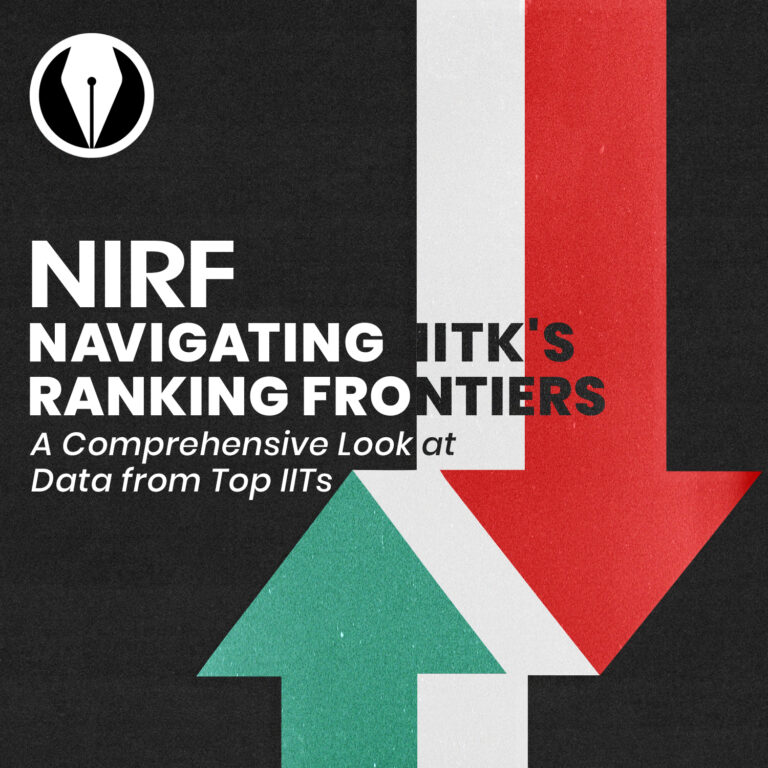The University Grants Commission (UGC), Govt. of India had released a notice in September ‘17 inviting proposals for a new scheme,‘Institute of Eminence’ (IOE). 10 public and 10 private Indian institutes of higher education will be termed as Institute of Eminence. But only the Institutes which feature in the top 50 positions NIRF rankings will be eligible to apply.
The selected institutes will be provided with regulatory architecture which would facilitate them to emerge as world-class teaching and research institutions. This proposal came soon after the Indian government called off the funds of Project Vishwajeet and scrapped it.The selected institutes will get financial assistance from the government in addition to financial and administrative autonomy.
IITK had formed a committee tasked with the preparation of the IOE proposal. The committee consists of Professors: Sandeep Sharma (CHM), A K Ghosh (AE), V Shankar (CHE), Raghu Nandan Sengupta (IME) and Sandeep Shukla (CSE).
Institutes of Eminence will get financial aid from the government, amounting a total of Rs 1000 Cr equally distributed across 5 years. Though the financial assistance is to be extended only to the public institutes. The grant will be in form of seed funding and the institutes will have to raise money from industry or other sources to sustain those initiatives. All the institutes will be financially autonomous in terms of their expending the allocated and raised money.
Further, the institutes would be allowed to take foreign students in a greater capacity. Up to 30% of admitted domestic students can be foreign students. And there will be no restriction on the fees charged from foreign students. Also, subject to a few caps, the IOEs will be allowed to determine the fees of domestic students as well given no admission is turned down due to lack of finances. Similarly, on faculty front, as much as a fourth of the faculty can be from outside India. These institutes will also be allowed to hire personnel from industry who are experts in a field but do not have higher education qualifications.
The IOEs will also get greater freedom in academic affairs. They will be allowed to offer more interdisciplinary courses. Subject to a few restrictions, the IOEs can also decide course structure and credit hours on their own, giving them further autonomy.
Prof Sandeep Shukla though raised a concern that the number of private institutions in India which are capable of competing at a world level is very few. And if those universities which are not at the top level are given the label, it will only enable them to increase their fees with no real difference in functioning. When asked about chances of IITK, Prof Shukla replied that he is cautiously optimistic about chances of IIT Kanpur, considering the high competition.
He feels regardless of how fruitful this artificial push may or may not be in the longer run, the rethinking that is being done to ameliorate the functioning will help. It should at the very least serve as an opportunity to introspect. Even those institutes which do not make the cut should try to enact some of the reforms in the proposal through external help.
Although Prof Shukla is quite excited about this scheme, he is skeptical of the fact that improving the global rankings should not be a primary concern as there are several factors beyond our control. One reason why Indian Institutes do not do very well on the rankings is that the expenditure is converted to dollars for conversion. The purchase parity is not considered and thus Indian institutes are at a disadvantage because of it. Thus, he emphasizes that patent filings, publications, research fundings, collaborations and technology transfer needs to be given higher weight to further substantiate the claim. Another reason why foreign institutes do well on these rankings in comparison to IITs is that these are multidisciplinary institutions. Having Law schools, medical schools and other disciplines brings in diversity and also brings in more funding from different sources.
Contrary to Project Vishwajeet, the new scheme, Institute of Eminence gives an equal opportunity to all institutes in the top bracket to contest. This project seems to have the potential to propel Indian institutions to the top 100 institutes in the world. The government has set the deadline for submitting the proposal at 12th December. The list of selected institutes and the details of their plans will be revealed soon after.
written by Smit Chaudhary











I have uploaded 2 videos at YouTube (Part I & II) about “Critical Analysis of Institute of Eminence (IoE)”, a project worth of Rs. 10,000 Cr by MHRD, which is a way to build World Class Universities in India. I am sure my videos can help a lot for developing proposals for prospective institutes of Eminence.
URL of Part II is: https://www.youtube.com/watch?v=B9hm5LCroLo&t=7s
URL of Part One is: https://www.youtube.com/watch?v=zt_lVl4RZ0o&t=1499s